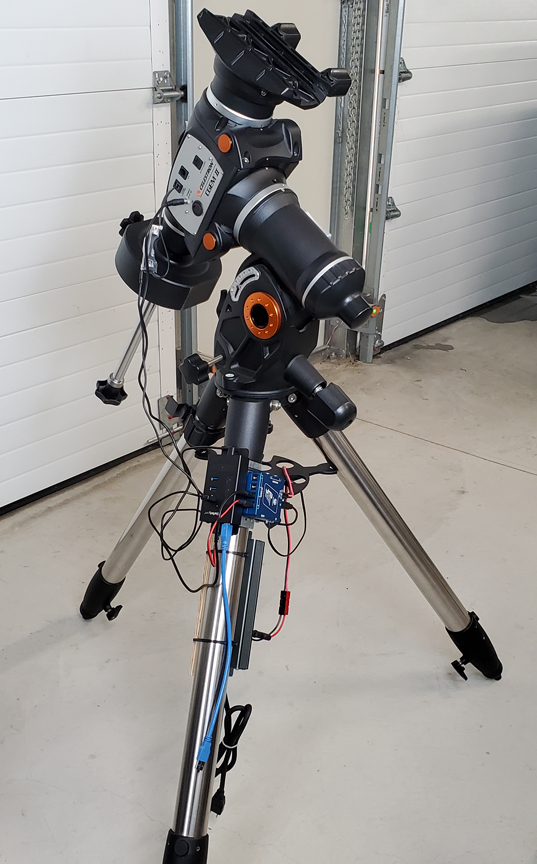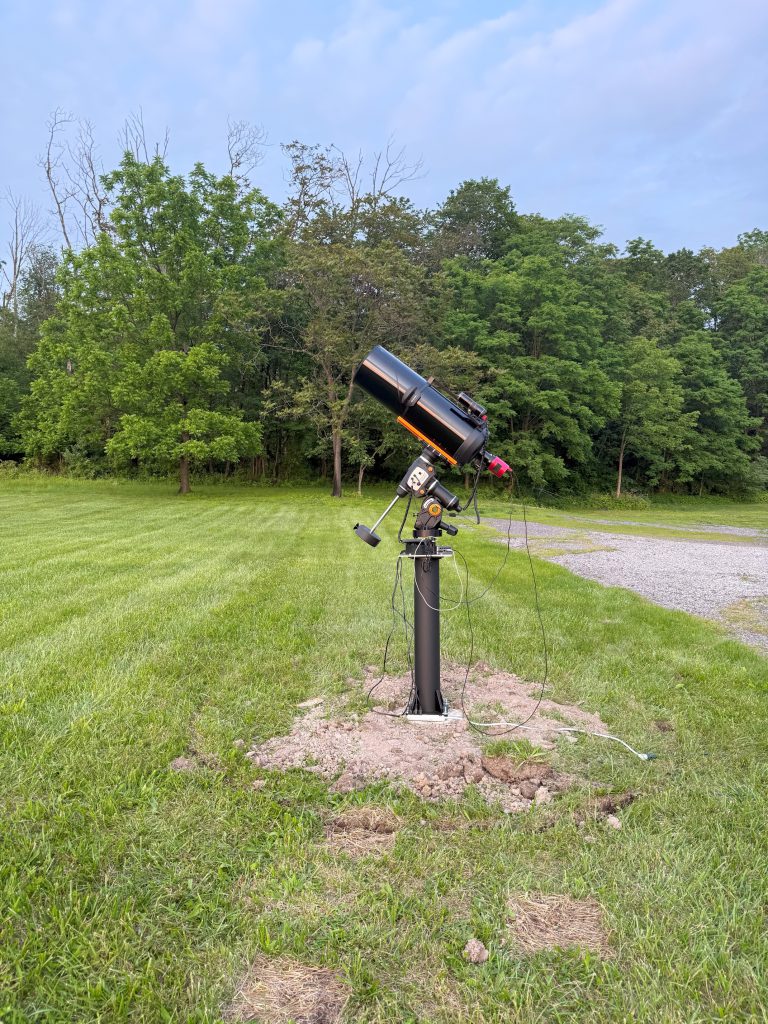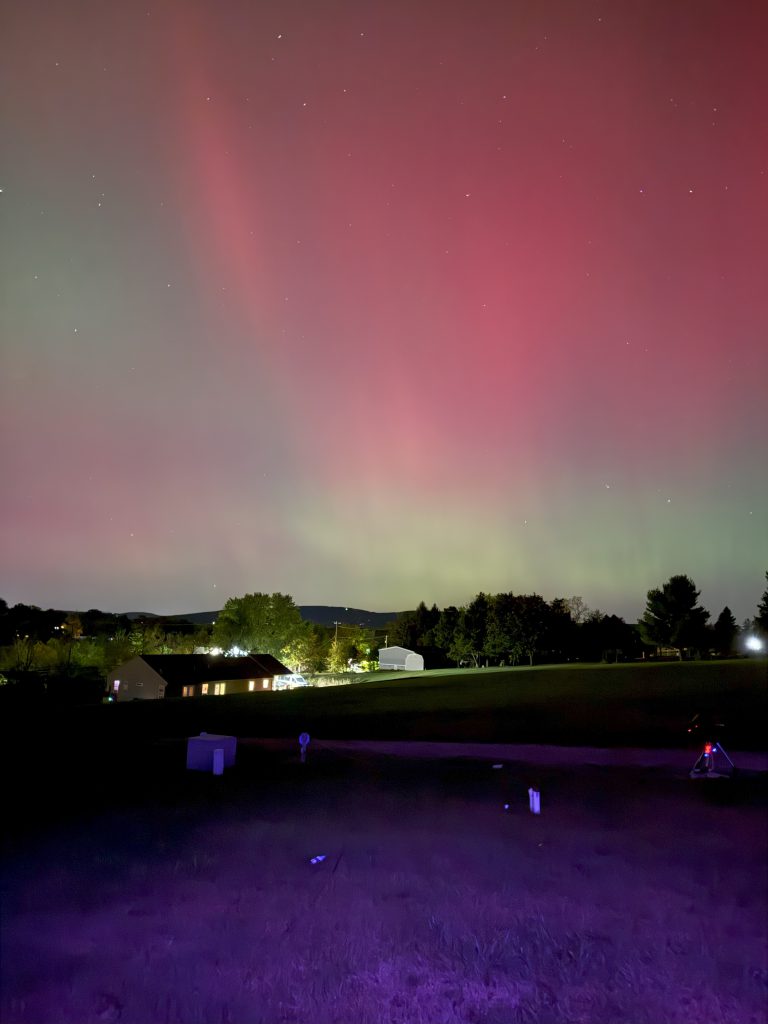
I highly recommend monitoring used telescope groups on Facebook. I knew my AVX mount would not be able to handle the newly acquired, used Celestron 9.25 telescope I found on Facebook. One day, there was a person in South Jersey selling a used CGEM II mount. He was willing to drive 30 miles from his house, which reduced my travel time considerably. The mount was in perfect condition. He had recently added a pier and was transitioning from the SCT setup to a refractor on an ASI mount.
The mount is rated to hold an 11″ SCT and up to 40 pounds of weight. I knew it would support my 9.25 Celestron telescope with a StarSense Autoguider, as my total payload is approximately 27 pounds.
The first time I used it, I encountered issues with the mount facing China instead of the stars. After calming down, I realized there was no problem with the mount; the problem was user error. It turned out that I had entered my longitude incorrectly in CPWI. I had typed 75.38.26 when I should have entered -75.38.26—a careless mistake.
After correcting this error, the mount performed well.
One aspect of this mount that I particularly dislike compared to my AVX is that the right ascension (RA) axis has no stop. On an AVX mount, the system can be set to stop at 90 degrees. The CGEM II lacks this feature and can, has, and likely will continue to complete a full 360-degree rotation, which pulls the wires tight and risks disconnection.
To mitigate this, when the mount is facing south, southwest, or southeast, I manually slew it back along the path it used to reach that position, returning it to the north before entering the next object to slew to. As long as I remember to do this, everything works properly—though I have admittedly forgotten more than once.

